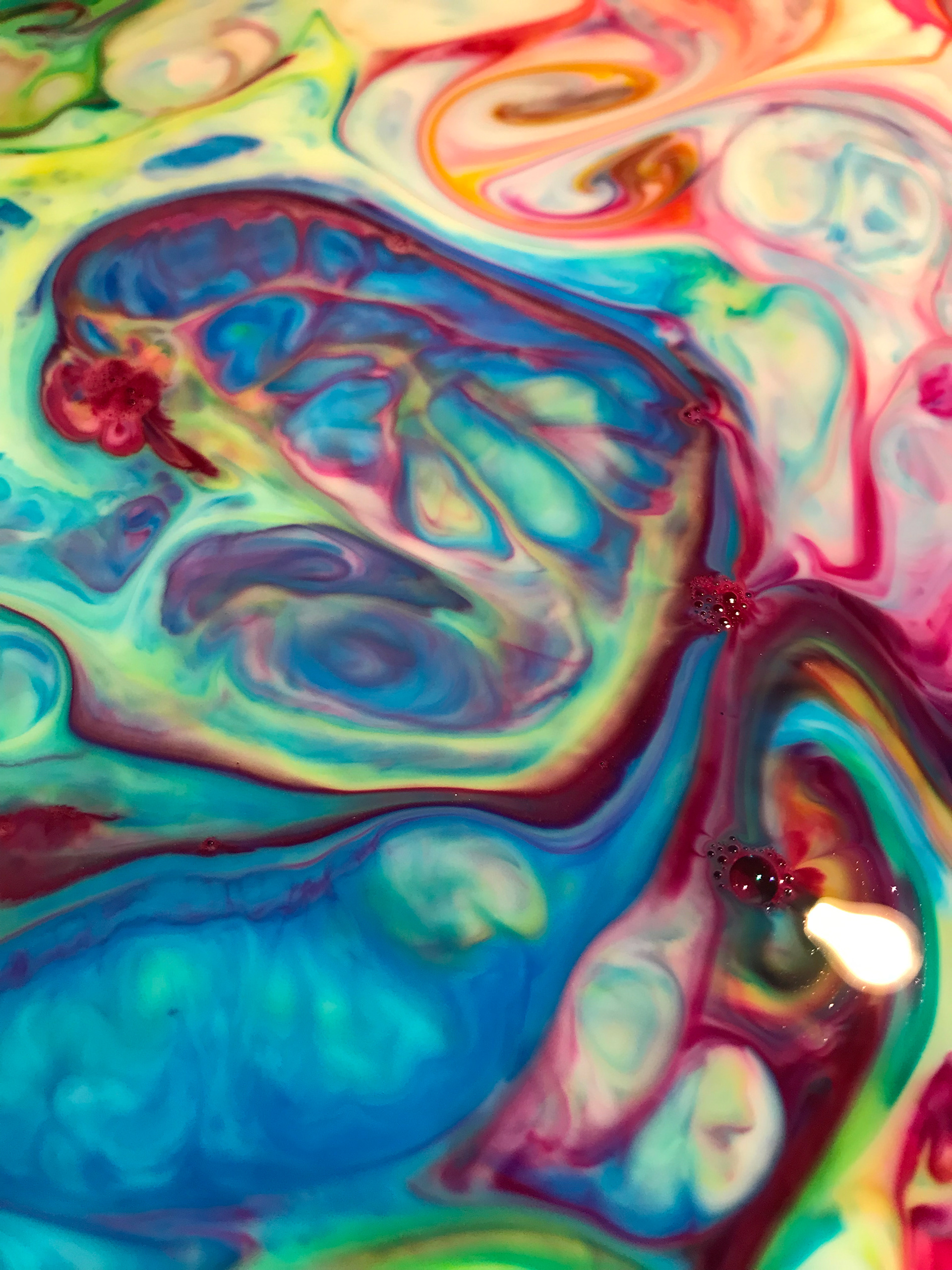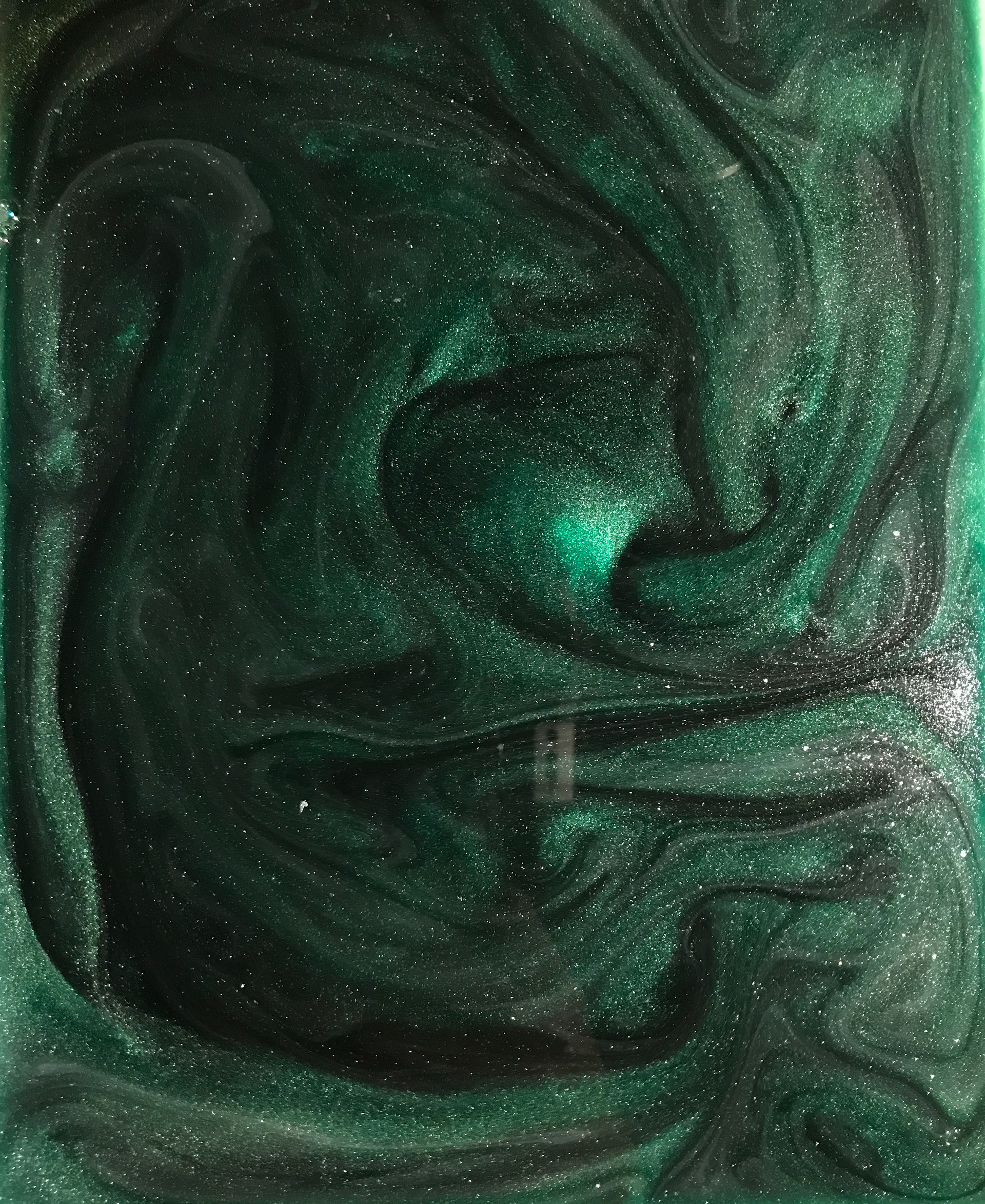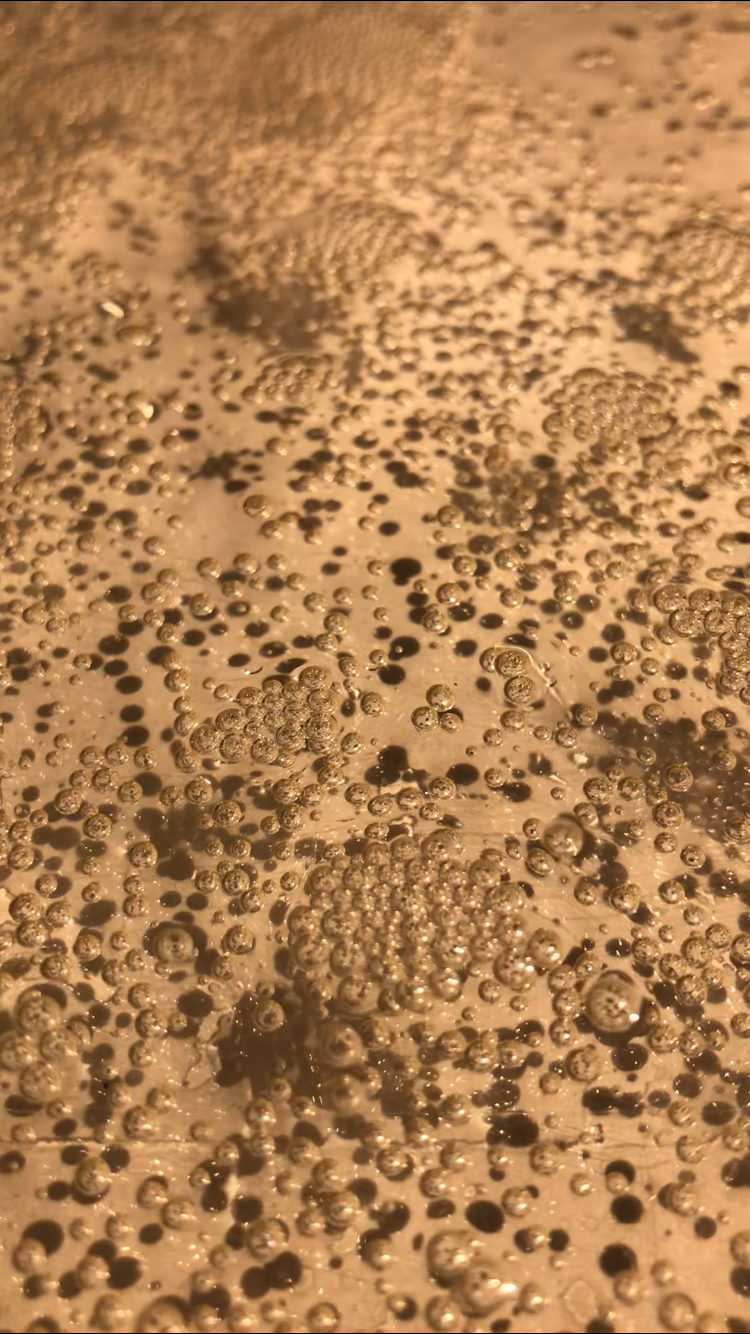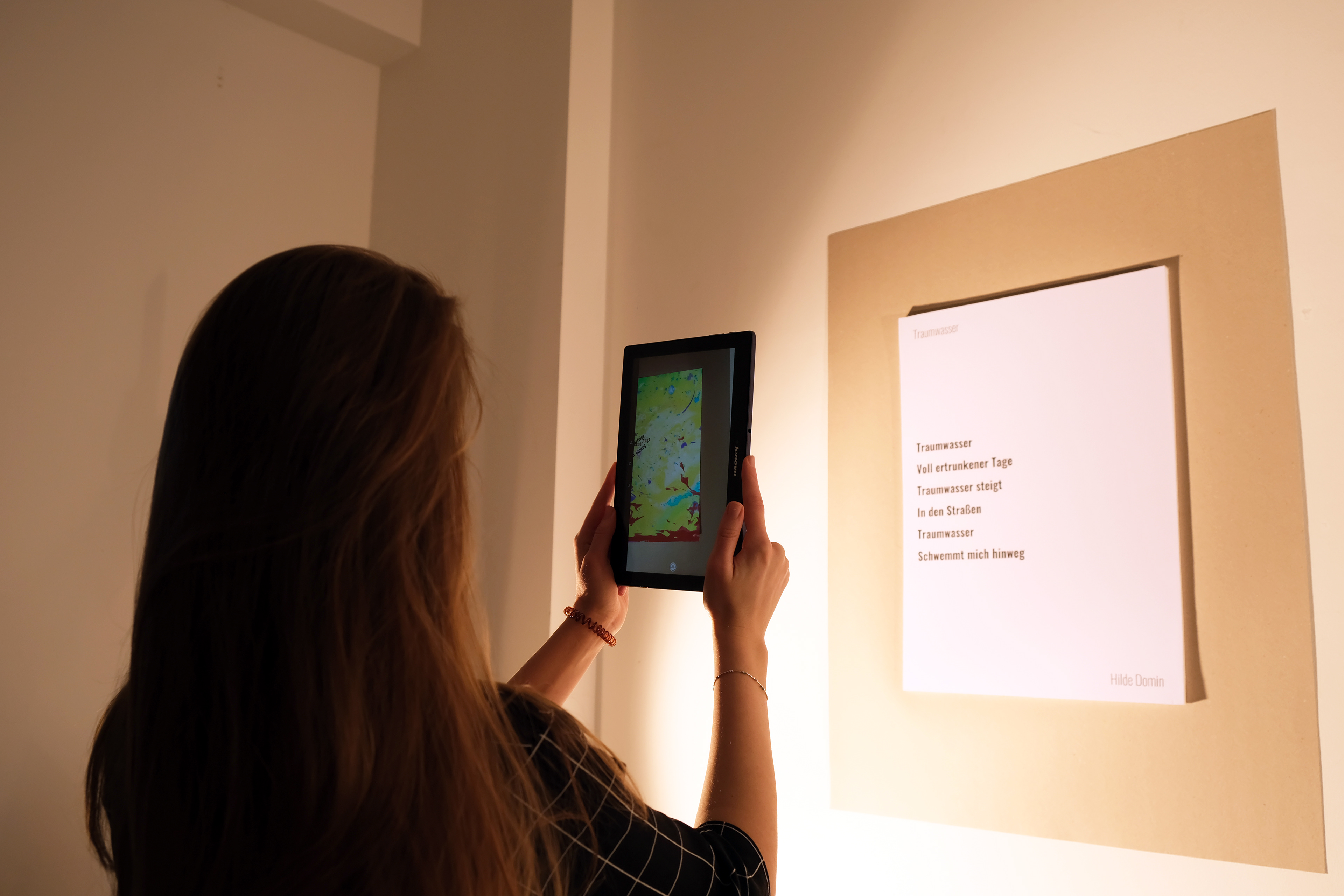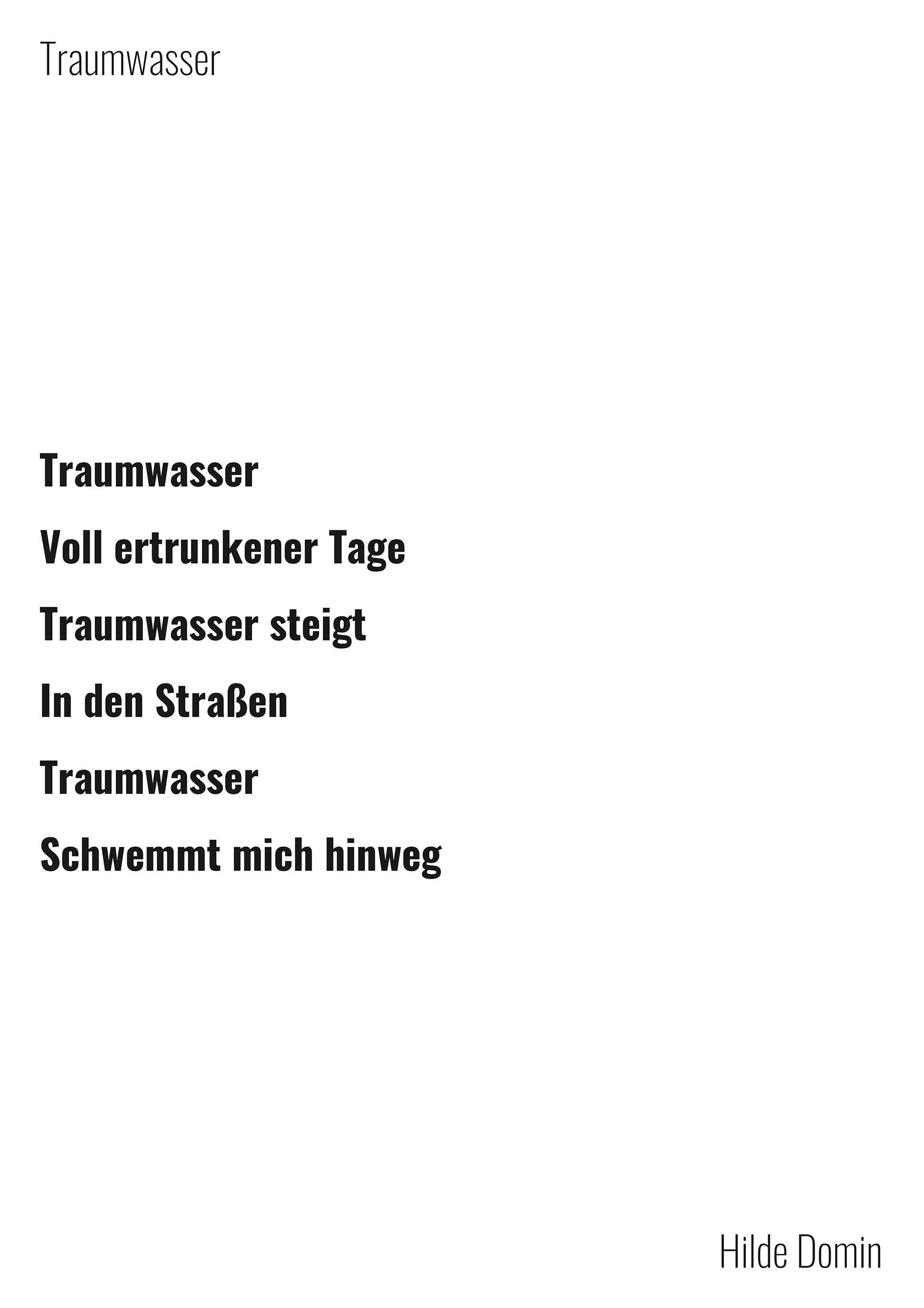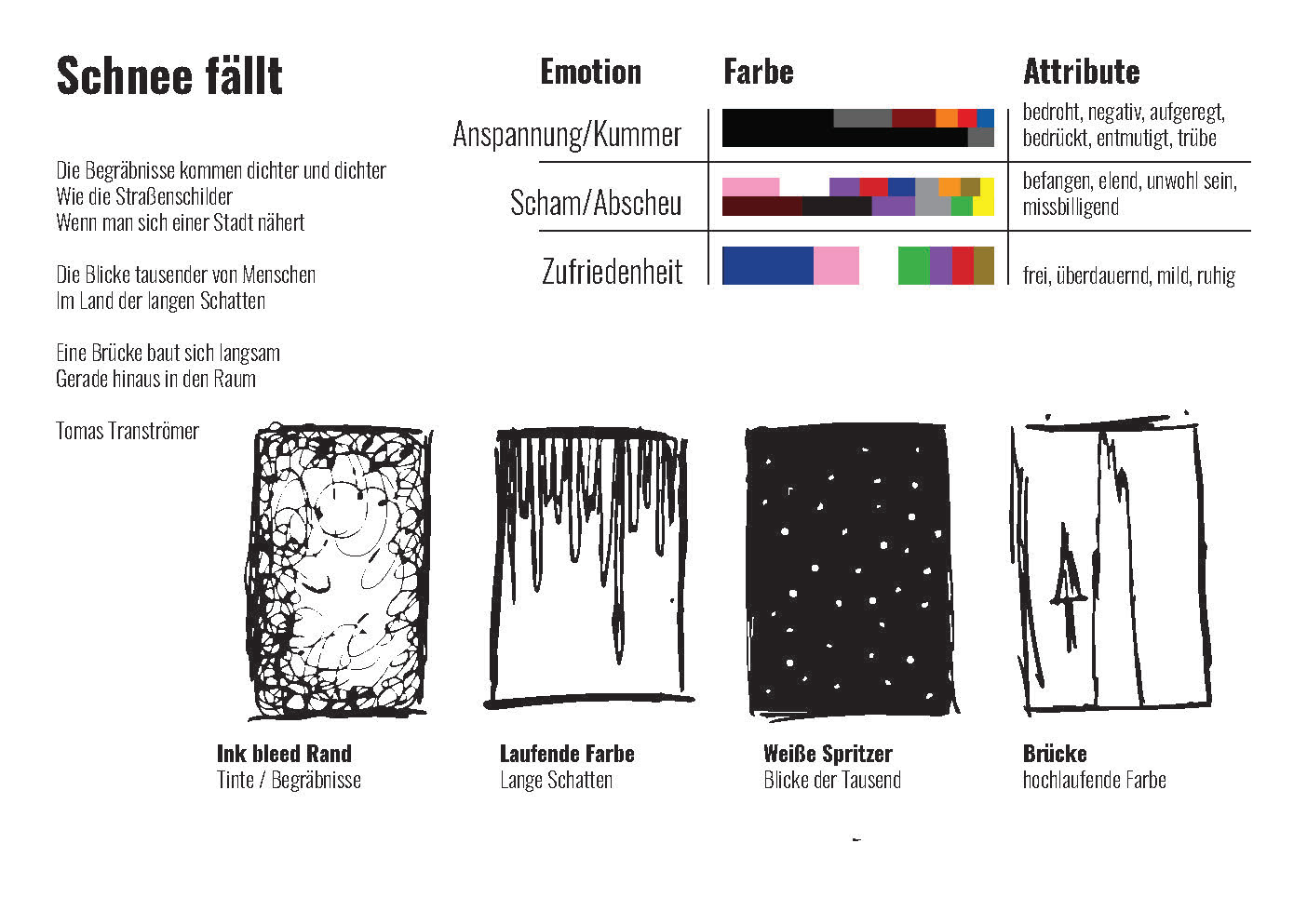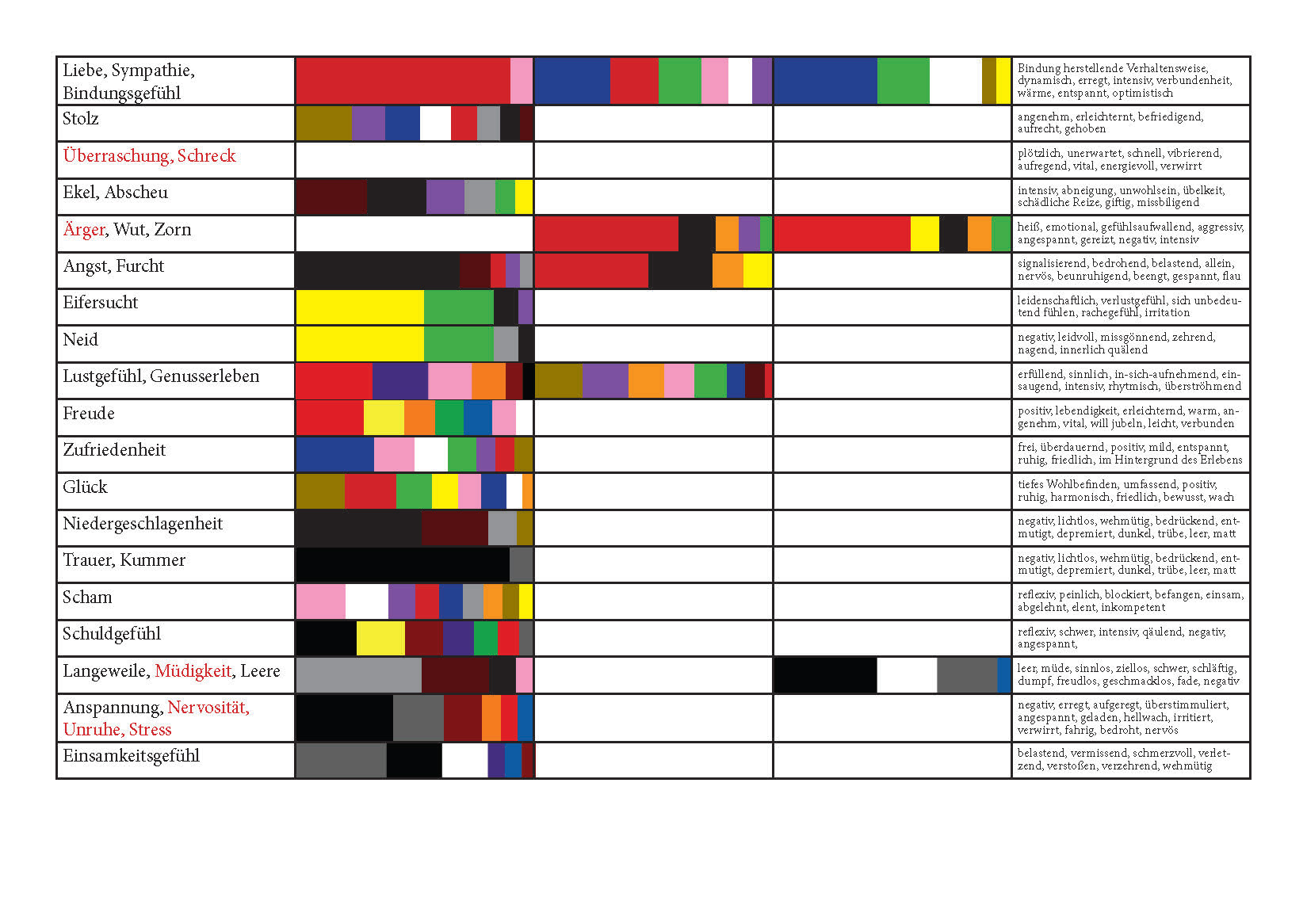In our self-initiated project we, Marlon and I, wanted to investigate what extent feelings and emotions could be visualised when dealing with a medium. The insights gained were later put into practice and tested for their effectiveness in the form of an exhibition.
During the project our focus was on the following aspects: The connection between visualisation and lyric, experimenting with the representation of emotions and feelings and getting to know and experimenting with analog techniques and new digital tools.
Process
When choosing a medium, we chose literature, because - apart from typography and rhetorical stylistic devices - it does not bring its own visible or audible representation of emotions and feelings.
Since literature covers a multitude of genres, it was necessary to define a certain type of literature. With regard to the exhibition that took place afterwards, we chose poems. The advantage of poems is their compact length and their scope for interpretation.
For the selection of the poems we met with the artist Dorissa Lem. Dorissa has been dealing with poems for many years and uses them as part of her art. Through her experiences she was able to give us many insights that helped the selection of the poems:
Hilde Domin - Traumwasser
Rose Ausländer - Damit kein Licht uns Liebe
Tomas Tranströmer – Schnee fällt
Since we also wanted to use the project to try out new techniques, we decided to use augmented reality for the exhibition. The time and intensity of viewing the by us created overlay is self-determined. The fact that the viewer interacts with the work on their own initiative also makes the experience more personal.
Visualisation
Our goal was to give the viewer visual access to the emotions of the poems. It was therefore important to analyse the chosen poems to determine which emotions they trigger when they are read. Since the visualisation was designed to be abstract, it was obvious for us to concentrate especially on colors and movement.
We also wanted to try out new things for the visualisation. We quickly agreed on analogue experiments with liquids and colours. The analog approach should serve as a contrast to the augmented reality.
The book "How Colors Work" by Eva Heller gave us information about the psychological effects of colors and color symbolism in language. With this information we created a table which should serve us as a design key for our implementation.
Structure and cinematic realisation
For the analog experiments we set up a workstation, our setup consisted of a table on which we placed a transparent basin in which the liquids were to be distributed.
When selecting the liquids we oriented ourselves on the attributes of our previously created table. Words like "cloudy", "oppressive" or "dark" gave us approaches, after which we selected the liquids. For the terms mentioned as an example, we chose black printer ink. Since we had previously divided the emotions of the individual lines of each poem into feelings and attributes, this quickly resulted in a rough storyboard, which we worked out even further based on our own perception of the poems.
Conversion to AR
For the implementation in Augmented Reality we used Artivive. The created AR video can then be linked to an image in the same format that is used as the surface on which the AR video is mapped. It is important to make sure that the animation of the posters is not too long, because the viewer has to keep his device in front of him for the whole time.
